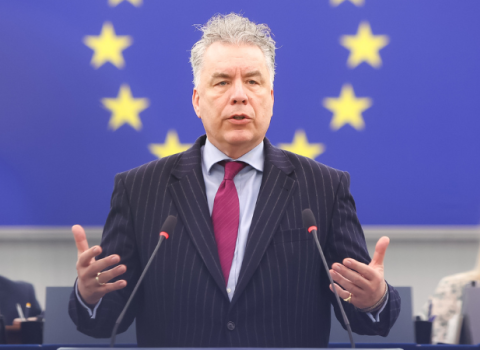Economist Mariana Mazzucato publishes a how-to kit for managing new funding formula. Missions should be ambitious - even risky - but also “realistically feasible”

EU research commissioner Carlos Moedas recruited Mariana Mazzucato to advise on how to create ‘moonshots’ in FP9
The European Commission has published the criteria for scoping and selecting the research missions that it hopes will provide a more encompassing and ambitious approach to innovation in Framework Programme 9 (FP9).
Missions are not single projects, "but portfolios of actions involving grants, prizes, new forms of procurement and financial instruments,” says Mariana Mazzucato, director of University College London's Institute for Innovation and Public Purpose, in a report released Thursday.
“Missions provide a massive opportunity to increase the impact of European research and innovation, grasp the public imagination and make real progress on complex challenges,” she says.
Mazzucato is a long-time ally of research commissioner Carlos Moedas, who recruited her last December to advise on how to create ‘moonshots’ in FP9.
Moedas is looking to Mazzucato to be a catalyst in changing the funding formula in Brussels and Commission officials will use her report – essentially a ‘how-to’ kit – to help solidify the political groundwork involved in getting missions into FP9.
Missions should be ambitious, even risky, but also realistically feasible, says Mazzucato.
The role model to which most people refer is US president John F Kennedy in 1961 promising to send a man to the moon and return him safely. The mission was accomplished eight years later.
A mission-based approach must be clear on the expected outcome. However, the trajectory to reach this end point should not follow a single path, or use a single technology.
Missions need a clear timeframe – long enough to allow research to develop, while at the same time having a delivery date. Crucially, it must be possible to say definitively whether the mission has been achieved or not, Mazzacato says.
In addition, a mission cannot only have relevance for one member state, or a sub-set of the European population, says Mazzacato. “It should touch the lives of, or inspire, a significant part of the European population.”
She lists several potential missions: Turning 100 cities carbon neutral by 2030; reducing by 90 per cent the amount of plastics entering the seas; reducing by half the progression of dementia in affected patients; building new satellites and surveillance technology to curtail the number of deaths of immigrants crossing the Mediterranean.
It has been suggested the UN sustainable development goals are a good starting point for FP9 missions, but, Mazzacato says, for the most part these, “Remain too broad to be actionable.”
How to manage missions
To oversee missions, Mazzucato suggests the Commission grafts processes from mission-oriented organisations like DARPA and ARPA-E in the US, Yozma in Israel, SITRA in Finland and Vinnova in Sweden.
“These organisations have explicitly welcomed risk-taking at the organisational level; they have used secondment practices to bring high-level scientists into the civil service for limited time periods,” she says.
Missions should not be managed in the same way as other parts of the research programme, such as the European Research Council or future European Innovation Council.
There should flexibility for participants to propose a variety of approaches for achieving goals and hitting milestones and it must be possible to increase the budget for a mission if there are indications extra investment could make the difference between reaching a mission objective or not, Mazzucato says.
Conversely, if it becomes clear a research objective is out of reach, the mission should be axed.





 A unique international forum for public research organisations and companies to connect their external engagement with strategic interests around their R&D system.
A unique international forum for public research organisations and companies to connect their external engagement with strategic interests around their R&D system.